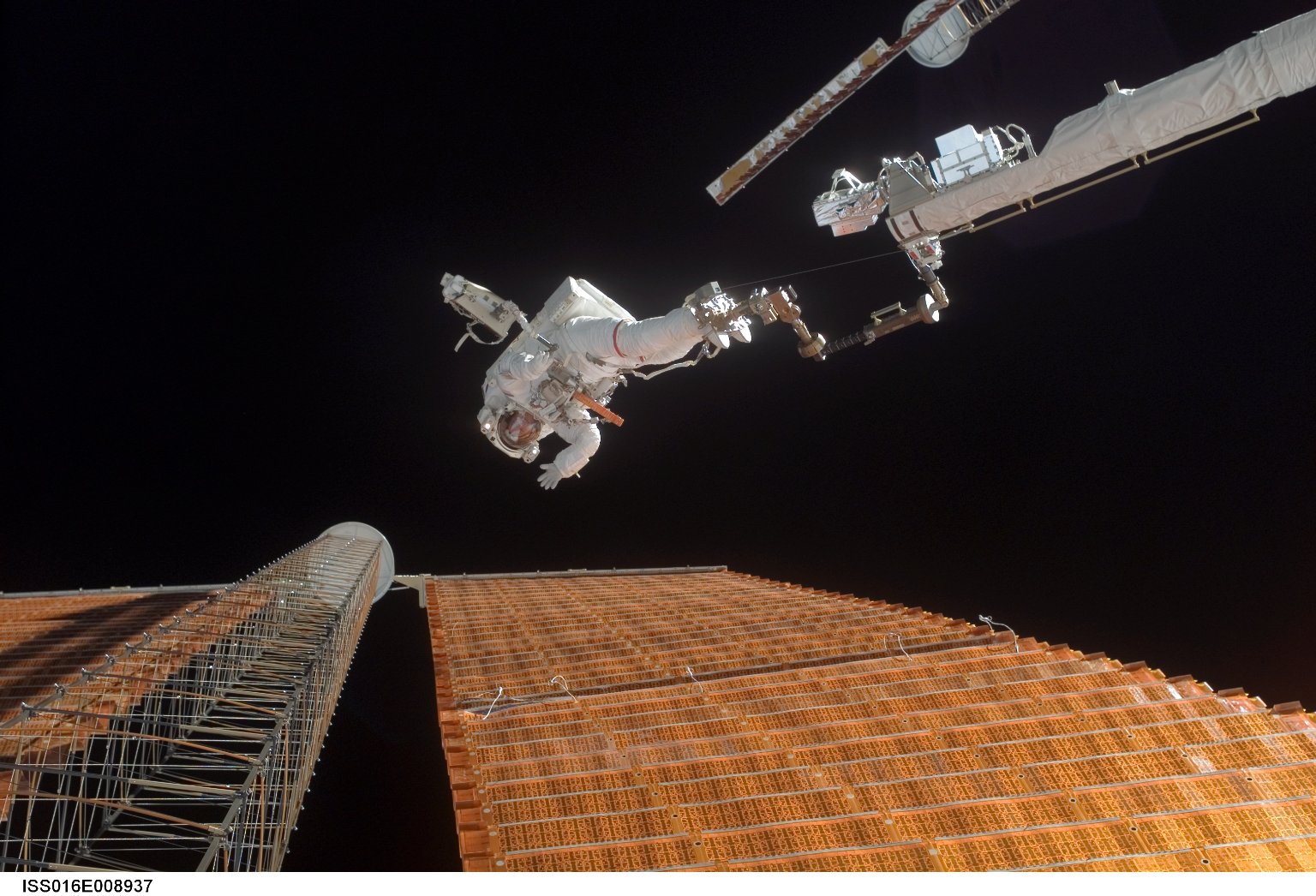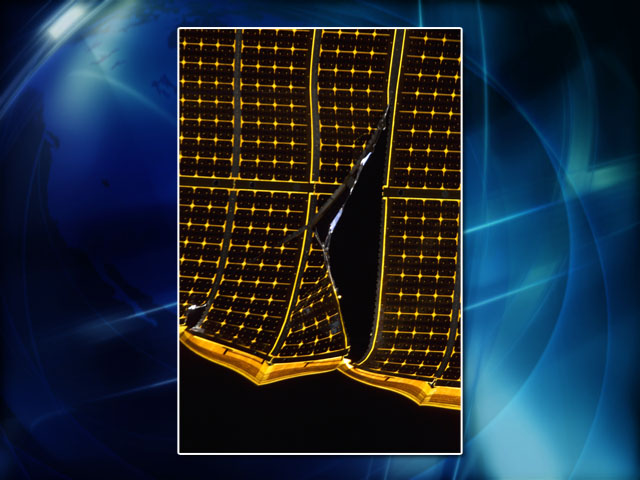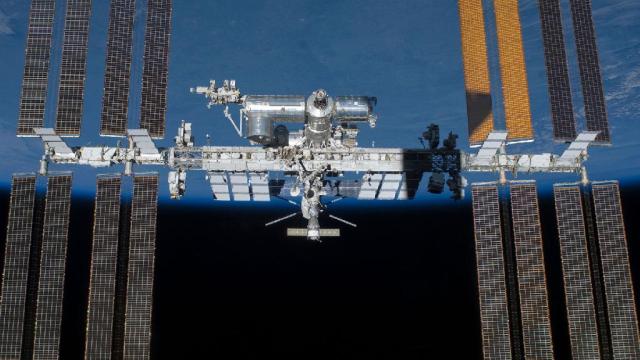The first element of the International Space Station (ISS) launched over 15 years ago, on November 20, 1998. For more than 13 years at least two human beings have been continually living off the surface of our planet. Assembly of the Space Station is now complete. It is being utilised by its crews and scientists from around the world to execute its primary mission — scientific investigations that can only be accomplished in the microgravity environment of Low Earth Orbit (LEO).
When you live 260 miles above the nearest Home Depot, simple repairs can suddenly become, well, not quite so simple. Originally on HackADay.com, NASA Flight Director Ed Van Cise takes us through the pioneer-esque ingenuity and resourcefulness necessary to keep the ISS running smoothly.
As with any structure, items age, wear out, or break and need to be repaired. What could be rather “simple” repairs on Earth can become much more complex in zero gravity. In some cases, “necessity becomes the mother of invention.”
A Frontier Outpost
The world-class laboratory that is the Space Station is, in numerous ways, a frontier outpost, similar to the forts (military and civil) established in the Westward expansion of the United States. The ISS orbits a “mere” 420 km (260 miles) above the surface of the planet. That’s about the same distance as between Houston and Dallas, Texas. However it’s not the distance from other human centres of civilisation that make it an outpost or a frontier. Instead, it is the fact that those 420 km are straight up above our heads. The ISS, a structure assembled in orbit to be roughly the size of an American football field, must not only survive but thrive in conditions unlike any other human-occupied structure. The facility needs to not only meet human needs for living but also provide the laboratory capabilities for science and research, both inside and outside the Space Station.
For the most part, the Space Station meets these requirements extremely well. However, just as on Earth, problems do occur. At times software or hardware does not function correctly because it wasn’t or couldn’t be tested in the unique environment of LEO. For example, there are life support systems that have never been widely used on Earth. Even though these systems are essential in either keeping the crew alive or the facility running, operating the systems themselves is a scientific experiment. In cases where this equipment stops working, the problems need to be fixed in order for the mission to continue and for the ISS to stay viable. In the worst case scenario, not fixing the problem could mean bringing the crews home and permanently ending the ISS mission.
As previous generations explored our planet and pushed the boundaries of civilisation they learned to adapt and to learn from the circumstances that surrounded them in order to survive and even thrive. When the wheel on the covered wagon broke, it had to be fixed then and there; there was no real alternative if the pioneers wanted to get to their next destination. Utilising that same manner of pioneering ingenuity and resourcefulness today allows us to formulate problem solving strategies for our orbital frontier outpost.
The ISS is equipped with as many spare parts as storage space allows. However, like the early pioneers and explorers, we cannot carry multiple spares for everything. For some things, we can rely on shipments from home. But as with all outposts, resupply missions are not cheap, easy, quick to schedule, or 100% reliable. For an example from the 1800s, if the grindstone of your mill in frontier Texas broke, you could order another one from St. Louis or points East, but it was very expensive and its arrival was months away and never truly assured. Whether waiting for a replacement or not, often on the frontier they tried to fix what they had using what they had on hand. Similarly on the Space Station, in many cases we must use the materials we have on hand to develop our own in-situ solution, or ‘hack.’ One advantage we have with the ISS that previous explorers did not is that there is almost continuous communication with hundreds of experts back “home” to assist in developing those creative ideas and solutions. Imagine Western pioneers having instant communication with support teams on the US East Coast; the telegraph and telephone clearly revolutionised the concept of a ‘remote support team.’
A History of Space Hacks
Unforeseen situations and problems arise despite the best efforts of those involved. It is these types of challenging moments and situations where human ingenuity and resourcefulness both onboard the ISS and in control centres around the world rise to the occasion and find a solution. This extremely high level of creativity facilitated the creation of the CO2 scrubber solution for Apollo 13, the cuff link repair of a ripped ISS solar array (see Sidebar below), and using a toothbrush on a spacewalk to install a stubborn but critical ISS power supply box.

Astronaut Scott Parazynski assesses his repair work of a torn ISS solar array during the STS-120 mission. During the spacewalk he cut a snagged wire and installed homemade stabilizers (cuff links) designed to strengthen the array’s structure in the vicinity of the damage. Via NASA
While there are numerous cargo resupply options for ISS, the need for on-site unique and ingenious recovery solutions will continue to be necessary, and may even increase in frequency as the Space Station ages. With every one of these successful recoveries we not only allow ISS to continue its mission but learn new insights and techniques to help future designers and explorers as they continue to push the boundary of our frontier beyond the relative safety of Low Earth Orbit.
Sidebar: Cuff Links?
Why on Earth (off Earth?) would astronauts need to install cuff links in a solar array? The P6 truss component of ISS was launched on STS-97 (ISS 4A) in November 2000. It contains two sets of solar arrays and provided power for the US Segment of ISS. It was “temporarily” mounted on top of ISS, on the Z1 truss. When the large truss ‘backbone’ of ISS was assembled later, the P6 arrays needed to be retracted so the arrays “down below” on the larger truss did not contact the P6 arrays “up above.” The arrays were retracted on missionsSTS-116 (12A.1) and STS-117 (13A), both in 2006. That’s 6 years after they were deployed. The arrays (each blanket being the size of a basketball court) folded up accordion style and went back into their very small blanket boxes. On STS-120 (10A) in October 2007, the P6 truss was detached from the Z1 truss and moved to the extreme port side of the ISS, where it was connected to the P5 truss which completed construction of the ISS truss elements.
All that remained was to redeploy the P6 solar arrays and generate power. Those blankets, however, after being deployed in the atomic oxygen environment of Low Earth Orbit for 6 years, and then folded up for 1 year, did not unfold gently and neatly. Unfortunately, a couple of the panels stuck together and even though deployment of these basketball-court-sized arrays was done very slowly and gently, a couple of the hinge lines on one of the blankets tore.
It is hard to see in the photos but there are actually a few guide wires that run the length of the solar array from top to bottom to assist keeping the array “straight” as it deploys and retracts. These wires go through grommets in each section of each blanket. Our clever In Flight Maintenance team developed some tools that used materials already on ISS, including wire and zipties, to create ‘cuff links’ that interfaced with those grommets and essentially put the blankets all back to where they needed to be.
Today, in early 2014, the P6 solar arrays continue to do exceptionally well. The cuff link repair remains intact. We periodically have the crew take images of all of the solar arrays to allow for inspection for damage or degradation. There are, as yet, no issues or problems noted with the cuff link repair hack. The P6 arrays, the oldest on the US Segment, continue to output power just as well as their siblings.

Close up view of one of the torn solar array blankets on the P6 truss.
This post was originally published on HackADay.com, a site for engineers and engineering enthusiasts that focuses on building rather than buying, fixing rather than discarding, and celebrating Fresh Hacks Every Day. It has been republished with permission.
